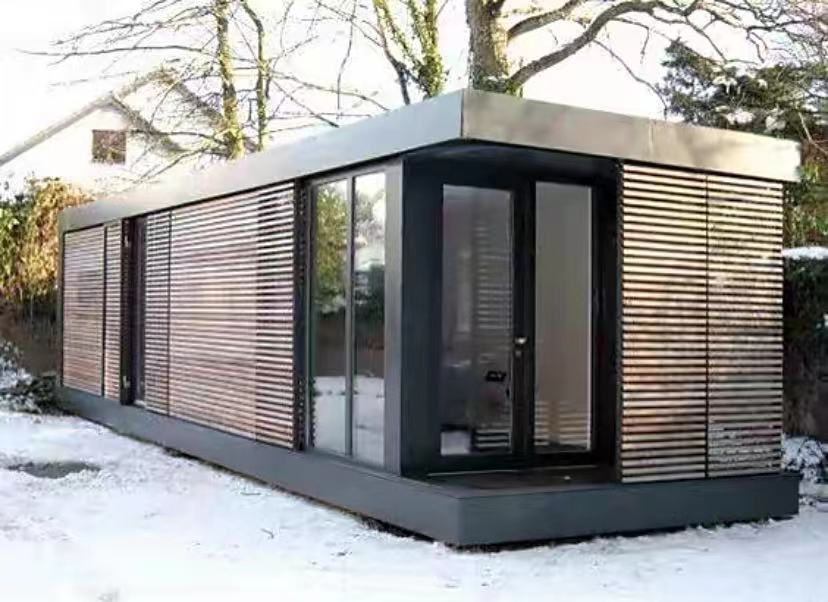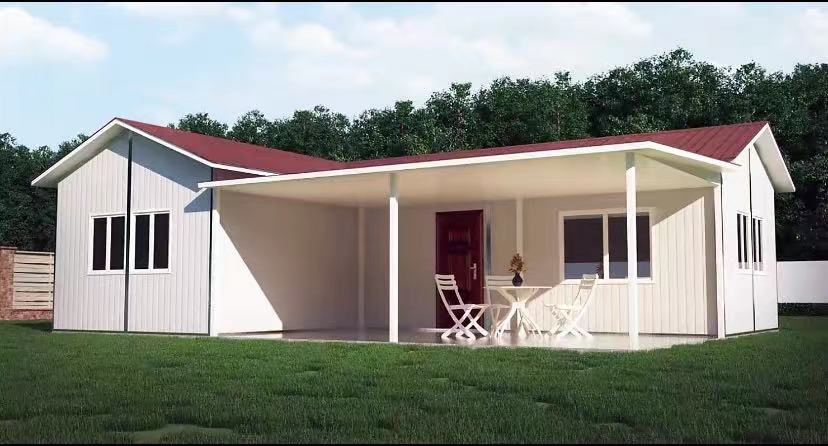What is prefabricated house?
“Prefabricated house is” assembled house “, which is the popular name of prefabricated house. Its full name is prefabricated house, which is built by industrialized production method. It is a house built by prefabricating some or all components of the house in the factory, then transporting them to the construction site, and assembling the components through reliable connection. It is called industrialized house or industrialized house in Europe, America and Japan. The difference between the “assembly house” is that some parts are prefabricated, and the pouring at the construction site is the same as that of traditional buildings, not the imagined “building blocks”. Therefore, when the house is completed, there is no difference in appearance. “
Jean prouv é is one of the pioneers of prefabricated houses. His construction philosophy, starting from economic and efficient pragmatism, responds to the technological changes in the first mechanical age. Since the 1930s, prouv é has begun the exploration of “prefabricated houses”, whether it is a removable military camp designed for the military during the war, an emergency shelter for refugees, or a public building designed for the placement of civilians after World War II. Born in an art family in Nancy, the birthplace of the French Art Nouveau movement, prouv é is a key figure in transferring mass production of machinery to the field of practical architecture, These prefabricated housing components made of metal can often be assembled by a small construction team in one day, which once provided a avant-garde solution to the post-war housing crisis.

Prefabricated houses are mainly divided into three development modes:
Development mode 1: Precast concrete structure house
PC (prefabricated concrete structure) “precast prefabricated concrete structure” is a concrete structure formed by taking precast concrete components as the main components, through assembly, connection and combining with partial cast-in-place. PC component is a finished concrete component formed by the factory production of component processing units. PC housing has many advantages, such as high efficiency and energy conservation, green environmental protection, cost reduction, and providing residential functions and performance.
Development mode 2: prefabricated steel structure houses
The cold-formed thin-wall aluminum zinc plated light steel structure system is the pioneer of green building. The Ministry of housing and urban rural development has set the development direction of low-density housing in China for its remarkable advantages such as energy conservation, environmental protection, good seismic performance and fast construction speed.
This system is a new system developed in the United States in the 1950s to replace wood structures. This system has been widely used in the United States, Canada, Japan, Australia and other countries. The steel structure housing production in Australia accounts for about 50% of all new houses.
It is widely used in the fields of post disaster self built houses, landscape buildings, public buildings and so on because of its characteristics of high intelligence, high precision, high strength, light weight, more material saving, super corrosion resistance, economy, high occupancy rate, excellent seismic performance and so on.

Development mode 3: Prefabricated container modular house
Leisure clubs and tourist hotels created by using container rooms. The roof slab is made of outer glass fiber reinforced plastic + steel skeleton + inner glass fiber reinforced plastic, equipped with water and electricity lines, ventilation systems such as doors and windows, reception rooms, accommodation rooms, toilets, etc., with high functional layout, convenience and comfort, reflecting a unique style of freedom and creativity.
Under the strong appeal of some scholars for the government to issue supporting policies for container housing, the development momentum of container housing is expanding intentionally or unintentionally. In fact, on the other hand, the container room also has more advantages and functions that traditional buildings do not have. For example, it is used in hotels, resorts, holiday villas, motels, toilets, cafes, convenience stores, rest booths, etc.
Compared with brick concrete structure houses, the construction water consumption of container houses is 1/30 of that of brick concrete structure houses, and the concrete loss is 1/50; The construction waste and decoration waste are reduced by about 99%, the concrete consumption is reduced by about 9800 cubic meters, the construction water consumption is reduced by about 1450 tons, and the construction waste is reduced by about 495 tons; The recovery rate of building materials is 70% higher than that of traditional buildings, and the construction period is shortened by about 50%. Compared with brick concrete structure houses, the overall energy saving is about 50%.
The convenience and mobility of container houses and composite houses seem to be more suitable for tourism, a market with extremely frequent passenger flows. Because if we want to build a building in the scenic spot that has the least destructive force to the environment, the most creative characteristics and the most flexibility, the container room is perfect.
In many cities such as Britain, Japan and France, containers and composite houses are widely used to manufacture residences, museums, specialty stores, office buildings, exhibition halls, villas in tourist areas, motels and various creative buildings. They are not only widely used among the people, but also strongly supported and actively participated by the government. Amsterdam, the capital of the Netherlands, is the city with the largest number of container houses in the world.
In the United States, the major mobile housing manufacturers will launch a batch of mobile housing according to the market demand every year, and the supply often exceeds the demand. These precedents let more people see the feasibility of this kind of construction. In China, where housing prices are soaring and building pollution is becoming increasingly serious, the emergence of container houses may create new possibilities for improving the living environment and create value for people’s new green life mode.